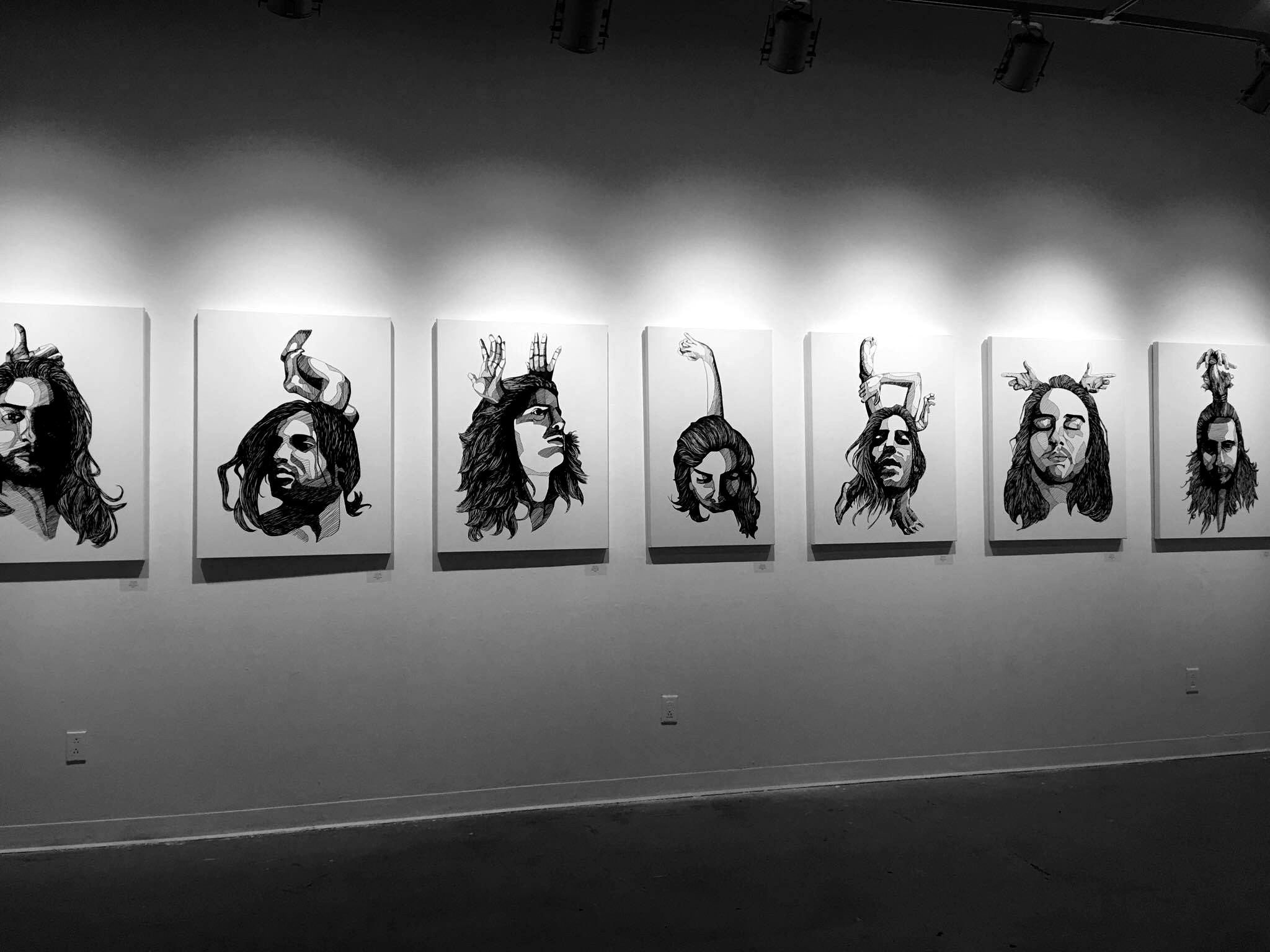Alexei Muravsky | Contributor
Featured Image: Elham Fatapour and Nima Arabi’s Monochromatic respectively explored injustices and the human life cycle. | Angelica Babiera
In psychology, people are always taught to break down words into their roots to better understand the meaning behind them. York Visual Arts students’ Elham Fatapour and Nima Arabi’s art exhibition, entitled Monochromatic, struck as one such word that is challenging to uncover. In discovering the exhibition at The Gales Gallery, in the Accolade West building, students were reminded that talent still runs deep within the walls of York.
Both artists’ inspirations for curating their respective pieces differed but meshed well in metamorphosis. Fatapour’s own inspiration comes from the injustice suffered by children, war victims, and refugees, and her experience as a volunteer in an orphanage, to paint their stories and struggles.
“This situation, endured by a huge group of kids, is not what they deserve. I want to raise awareness about those forgotten people through my paintings. I keep the colour palette of this series very limited, almost monochromatic—similar to the colourless lives of those children,” Fatapour explains.
Meanwhile, Arabi’s own motivations came from the human life cycle. He posits that humans have many stages they must pass through before they become fully-fledged adults, with countless obstacles and conflicts blocking their path—all contributing to their character. He decided to show these changes with limbs and their different gestures, expressing diverse feelings.
To add to the gravity of the work, all the oil paintings are modeled after real people. Fatapour used some photographs she had taken herself on the border of Iran and Pakistan. All the life-sized, full-body images were based on her photos and a few portraits. The audience noticed that her process was not far apart from reality—she painted the realistic faces first, and then washed them away. The empty canvases that composed the exhibition depicted the absence of those that passed away or completely vanished, forgotten by history.
The concept originated from Fatapour and Arabi’s empathy for the people around them. Fatapour wanted to raise awareness about those forgotten people through her paintings.
She started this series by painting a few pieces about women who were victims of acid attacks. Later, she focused on a group of primary school children who were injured severely in a fire at their school. A few of them passed away, and the rest must live on with a mask, in order to cover the damage done. After that experience, she was pushed to depict portraits of refugee and homeless children. Fatapour says she decided to develop this concept and create as many as possible, in order to make this series more powerful and impressive.
Arabi, on the other hand, kept the idea of the human lifecycle in mind. He mentions how Roy Lichtenstein was a huge influence. His use of visible and heavy strokes—a sign of true control over the material—was an inspiration to him. Arabi, therefore, used Sharpies for everyday note-taking and sketching, which translated onto the canvas.
Both artists mentioned that their respective programs at York helped them tremendously with their career in the Arts. Fatapour enhanced her critical thinking, leading her to see past the skills art requires, and comprehend the conceptual components that make it lucid. Arabi opened his mind further due to the conversations he was able to have in his visual arts classes, in turn gaining a wider lens with which to pull perspective. Both applauded the professionals and professors they were able to meet that continue to push them outside their comfort zones and aid them in generating opportunities.
Outside of this formal art environment, Fatapour’s past involvement with politics makes her enthusiastic about connecting it with her art. She encourages other students to garner their courage and create conversations about issues going on in the world through their own art.
In essence, singular colours defined Monochromatic, creating a lone feeling amidst such a chaotic world. It signified the colourless life of the subjects under investigation. It pondered themes of economy, eloquence, and power. The exhibit was far from singular, reaching into an infinite amount of space within our own souls; speaking to all the colours that our feelings exude.


